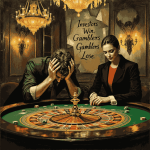
Contrarian Outlook: Balancing the Scale of Success and Risk
Updated Oct 29, 20234
Introduction
Adopting a Contrarian Outlook could be a strategic stride towards achievement in an environment where collective opinions often eclipse individual discernment. The Contrarian Outlook—embracing independent thought, questioning conventional wisdom, and stepping away from the crowd—offers a potential for transformation. Those who dare to think differently often spot the overlooked, navigate beyond the majority, and sharpen their analytical skills.
In this engaging exploration, we delve into the soaring triumphs and inherent risks of a Contrarian Outlook, highlighting mavericks who’ve converted unconventional thought into tangible success. We’ll equip you with methods to nurture your Contrarian Outlook and examine the role of Contrarianism in moulding society. Lastly, we’ll probe the delicate balance between Contrarianism and receptiveness and the stimulating impact of contrarian thought on personal growth.
The Benefits of a Contrarian Outlook: Unveiling Hidden Opportunities
A contrarian outlook offers a powerful lens through which to view the world, providing numerous advantages in both personal and professional spheres. By challenging conventional wisdom and questioning established norms, contrarian thinkers often uncover unique opportunities and innovative solutions that others overlook.
Discovering Hidden Gems
Contrarian thinkers excel at identifying overlooked opportunities:
– Investment potential: By questioning market assumptions, contrarians can spot undervalued assets before the crowd catches on.
– Business innovation: Challenging industry norms can lead to groundbreaking ideas and disruptive technologies.
– Long-term vision: Contrarians often have the patience to wait for their unconventional ideas to bear fruit.
Avoiding Groupthink Pitfalls
A contrarian mindset serves as a bulwark against the dangers of herd mentality:
– Objective analysis: Contrarians can step back and evaluate situations dispassionately, even when popular opinion leans strongly in one direction.
– Risk mitigation: By questioning consensus, contrarians can avoid common pitfalls that trap those who follow the crowd blindly.
– Data-driven decisions: Contrarian thinking encourages decisions based on intrinsic value and potential rather than popular sentiment.
Enhancing Critical Thinking
Adopting a contrarian outlook sharpens analytical skills:
– Problem-solving: Challenging assumptions leads to more creative and practical problem-solving approaches.
– Analytical rigour: Contrarian thinking demands thorough analysis and evidence-based reasoning.
– Adaptability: Thinking critically enhances one’s capacity to navigate complex and changing environments.
Fostering Resilience and Innovation
Contrarian thinking builds mental toughness and adaptability:
– Embracing uncertainty: Contrarians are comfortable with ambiguity, a valuable trait in today’s fast-paced world.
– Creative solutions: By questioning the status quo, contrarians often devise innovative approaches to challenges.
– Resilience in adversity: Independent thinking builds resilience against setbacks and criticism.
A contrarian outlook is not merely about being different for its own sake. It’s about cultivating a mindset that questions, analyzes, and innovates. In a world where conformity often reigns, the contrarian’s ability to think independently and challenge norms can lead to remarkable insights, opportunities, and breakthroughs.
Contrarian Outlook: Navigating the Challenges
While a Contrarian Outlook can offer a fresh perspective and unique insights, it also presents challenges. Venturing against the current popular opinion can lead to isolation and resistance, particularly in today’s world, where social media and echo chambers often amplify groupthink.
One of the significant challenges is the risk of being incorrect, as contrarians frequently go against mainstream views. However, this risk is often seen as an opportunity for learning and growth rather than a setback.
Another challenge of a contrarian outlook is facing criticism, scepticism, and ridicule. Although challenging, standing firm in one’s beliefs provides an opportunity to build resilience and enhance communication skills. Contrarians can use these experiences to refine their positions and engage in constructive dialogue.
Examples of Successful Contrarian Thinkers: Unveiling the Enigma
In finance and innovation, contrarian thinkers have often emerged as visionaries, reshaping industries and amassing fortunes. Let’s explore four extraordinary minds that have mastered the art of going against the grain:
1. Warren Buffett: The Oracle of Opportunity
Buffett’s contrarian approach is legendary. He doesn’t just invest; he hunts for overlooked gems in the market’s shortsightedness. His strategy of seeking “sustainable competitive advantage” has led him to unparalleled success. Buffett’s genius lies in his ability to see value where others see only risk, turning market pessimism into profitable opportunities.
2. Peter Thiel: The Contrarian Visionary
Thiel’s contrarian thinking extends beyond investments to societal progress itself. His “tech stagnation thesis” challenges the notion of widespread technological advancement, arguing that progress has been limited to specific sectors. This perspective has guided his investments in groundbreaking ventures like PayPal and Facebook, ideas that were once considered outlandish.
3. Ray Dalio: The Economic Machine Thinker
Dalio’s contrarian approach involves understanding the “economic machine” on a macro level. His principles of radical transparency and truth-seeking have revolutionized investment strategies. By looking at the big picture and considering unconventional factors, Dalio has consistently outmanoeuvred market trends.
4. Nassim Taleb: The Black Swan Prophet
Taleb’s contrarian thinking focuses on the improbable and the unpredictable. His concept of “Black Swan” events has reshaped risk assessment in finance and beyond. Taleb’s emphasis on “antifragility” – systems that benefit from volatility – offers a revolutionary perspective on navigating uncertainty.
These thinkers share a common thread: the courage to challenge conventional wisdom and the insight to see opportunities where others see obstacles. Their success isn’t just about being different but being right when everyone else is wrong. In the words of George Bernard Shaw, “The reasonable man adapts himself to the world; the unreasonable one persists in trying to adapt the world to himself. Therefore, all progress depends on the unreasonable man.”
Cultivating a Contrarian Outlook: A Guide to Extraordinary Thinking
Developing a contrarian outlook is both an art and a science in a world of conformity. Here are four powerful strategies to cultivate an enigmatic and revolutionary mindset:
1. Embrace the Paradox of Ignorance
Contrary to popular belief, true wisdom often lies in acknowledging our ignorance. As Socrates famously said, “I know that I know nothing.” Embrace this paradox by:
– Questioning your most deeply held beliefs
– Seeking out information that contradicts your current understanding
– Cultivating a sense of intellectual humility
Doing so opens your mind to possibilities that others, trapped in their perceived knowledge, might miss.
2. Practice Cognitive Alchemy
Just as alchemists sought to transform base metals into gold, aim to transmute conventional ideas into revolutionary concepts. This involves:
– Combining seemingly unrelated ideas to create novel solutions
– Inverting common assumptions to reveal hidden truths
– Applying principles from one field to solve problems in another
This approach can lead to breakthrough innovations that defy conventional wisdom.
3. Cultivate Strategic Discomfort
True contrarian thinking requires more than just disagreeing with the majority. It demands a willingness to sit with discomfort and uncertainty. To achieve this:
– Deliberately expose yourself to ideas that challenge your worldview
– Engage in debates where you argue against your position
– Embrace failure as a necessary step towards unconventional success
By making discomfort your ally, you’ll develop resilience and insights that others shy away from.
4. Master the Art of Temporal Arbitrage
Contrarian thinkers often see opportunities that others miss by thinking on different timescales. To develop this skill:
– Consider the long-term consequences of current trends
– Look for historical patterns that might repeat in new contexts
– Imagine future scenarios and work backwards to identify present opportunities
This approach allows you to capitalize on market inefficiencies created by short-term thinking.
The Enigma of Contrarian Mastery
Cultivating a truly contrarian outlook is not for the faint of heart. It requires a willingness to challenge not just others’ beliefs but your own most profound convictions. By embracing the paradox of ignorance, practising cognitive alchemy, cultivating strategic discomfort, and mastering temporal arbitrage, you can develop a mindset that sees beyond the obvious and uncovers hidden truths.
Remember, the greatest contrarians in history weren’t just different for being different. They saw what others couldn’t see, not because they were more competent but because they dared to look where others wouldn’t. In the words of George Bernard Shaw, “The reasonable man adapts himself to the world; the unreasonable one persists in trying to adapt the world to himself. Therefore, all progress depends on the unreasonable man.”
Are you ready to be unreasonable?
The Contrarian’s Guide to Market Psychology
Market psychology, a pivotal factor in trading and investment decisions, delves into the collective mindset of investors and traders. This collective sentiment, often visualized through a spectrum of emotions, oscillates from optimism to desperation, mirroring the market’s cyclical nature.
A tool often employed to illustrate this emotional rollercoaster is the “Wall Street Cheat Sheet,” a market psychology chart. This graphical representation encapsulates the emotional dynamics driving market fluctuations, serving as a compass for traders navigating the turbulent waters of the financial markets.
The chart commences with optimism, the dawn of a new investment cycle where investors, buoyed by a positive outlook, venture into the market. As the market ascends, so does the emotional barometer, moving through excitement and thrill and culminating in euphoria. However, the tide inevitably turns. As prices descend, optimism gives way to anxiety and denial, followed by fear, desperation, and panic. The market’s nadir is marked by capitulation, despair, and depression, where investor sentiment is bleakest. Paradoxically, it is often at this juncture that the seeds of market recovery are sown, giving rise to hope, relief, and a resurgence of optimism, thus setting the stage for a new cycle.
Understanding this emotional ebb and flow is a cornerstone of contrarian investing. By recognizing these emotional stages, Contrarians can identify potential market peaks and troughs, enabling them to swim against prevailing sentiment. This contrarian outlook underscores the fact that fundamentals do not solely drive markets but are also swayed by the collective emotions of their participants.
However, tempering this understanding is crucial by realising that the market psychology chart is a valuable guide, not a crystal ball. Market conditions are a complex tapestry woven from myriad factors, and investor sentiment can shift in the blink of an eye. Thus, the chart should be viewed as a navigational aid rather than a definitive forecasting tool.
The market psychology chart is a contrarian’s compass, illuminating the emotional dynamics that steer the markets. By acknowledging these emotional stages, contrarians can chart a course through the market’s highs and lows, make informed decisions, and potentially enhance their trading performance.
Conclusion
In conclusion, having a Contrarian Outlook can be a powerful tool for success. While there are challenges, the benefits of independent thinking and critical analysis are clear. Contrarian thinkers can identify opportunities others miss and make better decisions by questioning assumptions, seeking diverse perspectives, and embracing uncertainty. Contrarianism is essential in promoting progress and innovation in a world that often rewards conformity. Furthermore, the impact of Contrarian thinking on personal growth and the importance of balancing Contrarianism with open-mindedness should not be overlooked.
The study of crowd behaviour offers priceless insights into future trends, propelling contrarian investing and thinking to new heights. Embrace the power of mass psychology for a deeper understanding of market dynamics and profitable opportunities.
Compelling Pieces for Your Consideration
The Hive Mind: The Intricate Dance of Mass Psychology and Media














